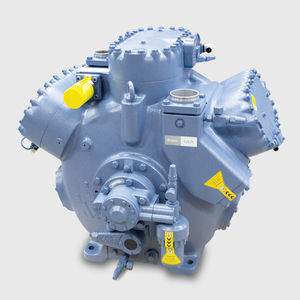
Fluidized bed dryer gassludge

Add to favorites
Compare this product
Characteristics
- Technology
- fluidized bed
- Applications
- gas, sludge
Description
The GEA Grasso Ammonia Dryer is a perfect supplement to your ammonia refrigeration system to ensure longer operational life as well as lower operating and maintenance costs. The ammonia dryer removes water from the refrigerant cycles without having the machines shut down. It keeps the refrigerant circuit dry and clean and your refrigeration system running efficiently.
Functionality of the GEA Ammonia Dryer
The ammonia dryer heats the aqueous ammonia, boiling the ammonia out of the water. It can be done either with an electric or hot gas heater. The distilled ammonia flows out of the dryer and is fed back into the separator. At the end of the cycle, the controls start the next filling and distillation process. Only after the water concentration in the container sump reaches the defined value, will the cycle end and the manual drain valve open. The remains which may contain sludge in addition to aqueous ammonia are directed to the prepared canister and then disposed of. Signal lights on the operator panel provide information about the relevant operating status of the dryer.
Impact of water in the refrigerant circuit
A refrigeration plant can have water levels of approximately 2% to 5% within a few years despite regular care. Due to the very different evaporating temperatures of water and ammonia, even very slight increases in water concentrations may increase the evaporating temperature of the ammonia water mixture. If the suction pressure alters the evaporating temperature of the aqueous ammonia, i.e. the intended temperature in the cooling chambers can no longer be achieved.
Catalogs
No catalogs are available for this product.
See all of GEA Wiegand‘s catalogsRelated Searches
- Drying system
- Pasteurizer
- Heat sterilizer
- Cleaning dewatering system
- Compact drying system
- Fluidized bed dryer
- Process sterilizer
- Freeze dryer
- Concentrator
- Air drying system
- Steam sterilizer
- Cooler dryer
- Spray drying system
- Concentrator for the food industry
- Gas dryer
- Process freeze dryer
- Pilot freeze dryer
- Sludge dewatering system
- Nozzle dryer
- Parts dryer
*Prices are pre-tax. They exclude delivery charges and customs duties and do not include additional charges for installation or activation options. Prices are indicative only and may vary by country, with changes to the cost of raw materials and exchange rates.





